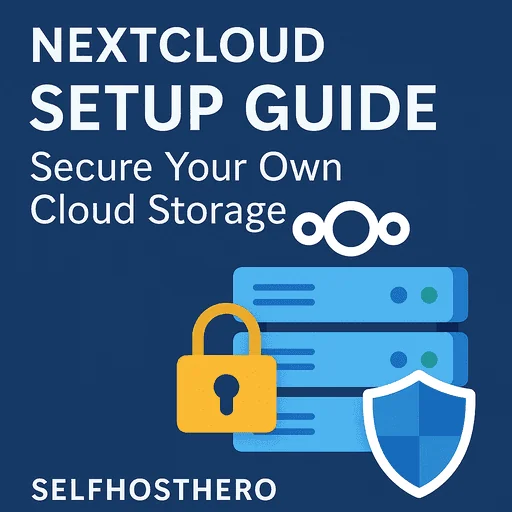Introduction
If you’re looking for a privacy-first, self-hosted alternative to Google Drive, Nextcloud is your best bet. In this guide, we’ll walk you through setting up Nextcloud on your own server, whether you’re a beginner or an advanced user.
Who is this for?
- Individuals concerned with data privacy
- Families, teams, or small businesses wanting private file sharing
- Beginners exploring self-hosted solutions
What you’ll achieve:
- A fully functional Nextcloud instance
- Encrypted access via HTTPS
- Optional advanced features like external storage and collaborative tools
Why Choose Nextcloud?
| Feature | Nextcloud (Self-Hosted) |
|---|---|
| File Storage & Sharing | Yes |
| Privacy | Full control, data stays with you |
| Collaboration Tools | Calendar, Mail, Contacts, Office Docs |
| Encryption | Yes (at rest & in transit) |
| Sync Clients | Windows, macOS, Linux, iOS, Android |
| Extendable | Yes (apps marketplace) |
Nextcloud provides cloud features without giving up privacy. It’s a full-featured suite you host yourself—perfect for replacing Google Drive, Calendar, and Docs.
Requirements
- VPS or server with Ubuntu 22.04+ (2+ vCPU, 4+ GB RAM)
- Root SSH access
- Domain (e.g.
cloud.example.com) - Ports 80/443 open
Installation Options
- Snap package (easy, fast setup)
- LAMP stack + manual Nextcloud install (more control)
- Docker (portable and clean)
This guide uses the Snap method for beginners.
Step-by-Step Installation (Using Snap)
1. Update System and Install Snap
sudo apt update && sudo apt upgrade -y
sudo apt install snapd -y2. Install Nextcloud via Snap
sudo snap install nextcloudThis installs everything: Apache, PHP, and Nextcloud.
3. Enable HTTPS with Let’s Encrypt
sudo nextcloud.enable-https lets-encryptFollow the prompts:
- Enter your domain
- Provide a valid email for certificate notices
4. Open Required Firewall Ports
sudo ufw allow 80,443/tcp
sudo ufw enableInitial Configuration
Go to your domain (e.g. https://cloud.example.com) in a browser and:
- Set your admin username/password
- Choose data directory (use default if unsure)
- Complete setup (it may take a minute)
Optional: Enable Additional Features
External Storage
Connect to S3, Google Drive (ironic, we know), SMB shares.
OnlyOffice / Collabora
Integrate a document editor to replace Google Docs.
Calendar, Contacts, Mail
Enable from the Apps section in the admin dashboard.
Mobile/Desktop Sync
Install official Nextcloud clients on your devices to sync files.
Advanced Setup Tips (for Experienced Users)
- Redis for caching (improves speed)
- MySQL instead of SQLite for better scalability
- Hardening via fail2ban + firewall policies
- Backup scripts to offload data safely (e.g. to another server or cloud bucket)
FAQs
Q: Is my data encrypted?
A: Yes, in transit (HTTPS). For encryption at rest, enable server-side encryption under settings.
Q: Can I use Nextcloud like Google Drive?
A: Yes, with file sync, web interface, sharing, and collaborative editing.
Q: Does it work for multiple users?
A: Absolutely. You can create multiple accounts with quotas, groups, and permissions.
Final Thoughts
Nextcloud gives you full control over your digital life. No more privacy trade-offs or Big Tech lock-in—just a secure, powerful cloud platform that’s truly yours.
Your files. Your cloud. Your rules.
Support SelfhostHero: Share this guide, join our community, or use our affiliate tools to keep open-source solutions thriving.

